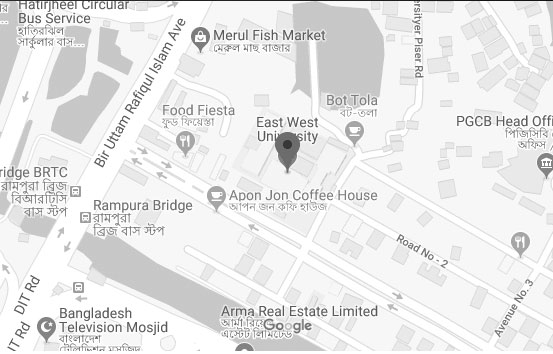- Plasma Physics
- Applied Mathematics
- Plasma Physics: Dusty plasma physics is a specialized branch of plasma physics that focuses on plasmas containing electron, ions and charged less dust particles suspended in the ionized gas. These dust particles interact with the surrounding plasma through electrostatic forces, leading to unique behaviors and phenomena. Dusty plasmas are found in many natural environments, such as in space and in cometary tails, and are also found in laboratory. The study of dusty plasmas provides insights into fundamental plasma dynamics, as well as practical applications in materials science, space exploration, and industrial processes involving plasma-based technologies.
- Cloud Electrification: Cloud electrification refers to the process by which clouds accumulate electrical charges, leading to the development of lightning and thunder. This phenomenon occurs primarily in convective clouds, such as thunderclouds, where the movement of supercooled water droplets, ice crystals, and snow particles causes collisions that transfer electrical charge. As a result, different regions of the cloud acquire positive or negative charges, creating an electric field strong enough to trigger lightning discharges, either within the cloud, between clouds, or to the ground. Understanding cloud electrification is essential for predicting and mitigating the effects of thunderstorms and lightning-related hazards.
- Dusty Plasma Physics
- Applied Mathematics
- Computational Fluid Dynamics (CFD, Heat and Mass Transfer, Turbulent Flow).
- Mathematical Modeling,
Robust methods of estimation, Outlier detection, Regression diagnostics, Data mining and statistical machine learning, Multivariate analysis, Statistical computing and graphics, Econometrics methods, Simulation and bootstrapping techniques.
Porous Materials for Environmental Remediation
-Synthesis of porous materials such as Metal-organic fameworks (MOFs), Zeolites, Nickle phosphate molecular sieves.
-Rapid synthesis of porous materials with microwave and ultrasound irradiation.
-Functionalization/modification of MOFs for targeted applications.
Adsorption/separation/Purification
–Adsorptive removal of hazardous materials, including Sulfur Containing Compound (SCC), Nitrogen Containing Compounds (NCC), Pharmaceuticals and Personal Care Products (PPCPs), Contaminants of Emrrging Concerns (CECs).
-Gas phase adsorption of arometics.
Heterogeneous Catalysis
-Acid catalysis with nano porous materials.
-Conversion of biomass into chemical intermediates via dehydration
-Reduction and photocatlysis of organic pollutants
1. Highly porous materials
- Synthesis/Application of porous materials (MOFs, zeolites, carbons, AlPOs)
- MOF- or organic polymer-derived carbons (highly porous, ordered and having various functionalities) adsorption/storage, catalysis and electrical energy storage.
-Rapid/continuous synthesis of porous materials with microwave and ultrasonics
- Functionalization/Modification of MOFs for selective adsorption of hazardous compounds
2. Adsorption/separation
- CO2 capture with porous adsorbents
- Fuel purification (removal of S- and N- containing compounds)
- Water purification (removal of pharmaceuticals, personal care products, pesticides, dyes)
- Adsorption/separation of hydrocarbons
- Adsorption/storage of gases
3. Heterogeneous catalysis
- Acid catalysis with porous materials (dehydration, isomerization, alkylation)
- Conversion of biomass into chemical intermediates with dehydration
4. Electrochemistry
-Supercapacitor
-Sensor
1) Adopting waste to energy techniques to overcome the current waste management problem and use sustainable alternative to conventional fossil fuels in Bangladesh’s transportation sector:
i) Biodiesel Production and Bioenergy Innovations in Bangladesh: Developing cost-effective and efficient catalysts, such as bifunctional hydrotalcite-based systems, for feasible biodiesel production from waste cooking oil (WCO) and other non-edible feedstocks. Focusing on process optimization, life-cycle assessment (LCA), techno-economic feasibility, and integration of green chemistry principles to ensure scalability and affordability in local contexts.
ii) Biogas production from food (organic) waste: To evaluate the potential of hydrothermal carbonization (HTC) for energy production, a technology that is still largely unpracticed in Bangladesh but holds strong future prospects due to its higher efficiency and superior environmental benefits.
2) Environmental Petroleomics: Investigating the molecular-level impact of crude oil/bio oil spills using ultrahigh-resolution mass spectrometry (UHR-MS) to understand the fate, transformation pathways, and environmental consequences of spilled oils, supporting effective oil spill response strategies and reducing ecological and human health risks.
3) Sustainable Environmental Practices: Advancing eco-innovation in energy and environmental sectors through green chemistry approaches, including the design of alternative adsorbents, advanced oxidation processes, and bioremediation techniques to remediate contaminated water and soil sustainably, thereby promoting long-term environmental and public health resilience.
4) Environmental Pollution and Monitoring: Examining the sources, distribution, and ecological impacts of heavy metals and other pollutants in soil, sediments, and aquatic ecosystems, particularly in coastal and industrial regions of Bangladesh. Utilizing advanced analytical techniques such as atomic absorption spectrometry (AAS), inductively coupled plasma (ICP) methods, and Geographic Information Systems (GIS) for spatial risk assessment and environmental monitoring.
5) Public Health and Environmental Safety: Addressing the intersection of environmental contamination and human health by assessing the chronic and long-term impacts of heavy metals, organic pollutants, and emerging contaminants. Emphasizing evidence-based policy recommendations to minimize health hazards and ensure environmental justice.
- Dynamical System
- Differential Geometry
- Astrophysics:
Gravitational lensing, large-scale structure of the universe, General Theory of Relativity, cosmic structures, ray tracing methodology, N-body simulations, dark matter, dark energy, and implementing machine learning approaches to deal with big datasets.
- Plasma Physics:
Electrostatic waves and their nonlinear structures in various plasma systems, space and astrophysical plasmas, multi-ion plasmas, degenerate quantum plasmas, nonextensive plasmas, strongly coupled plasmas, and dusty/complex plasmas.
- Theoretical and Computational Mathematics
- Polymer Chemistry
- Food Chemistry
- Natural Product Chemistry
My research focuses on the synthesis and characterization of nanomaterials, with a particular emphasis on two-dimensional (2D) materials for applications in energy, environmental, and electronic devices.
- Particle Physics, String Theory and Phenomenology
- Machine Learning Applications to Theoretical Physics
- Statistical Modeling
- Time Series Analysis
- Stochastic Processes
- Analysis of Longitudinal Data
- Bayesian Analysis
- Public Health


